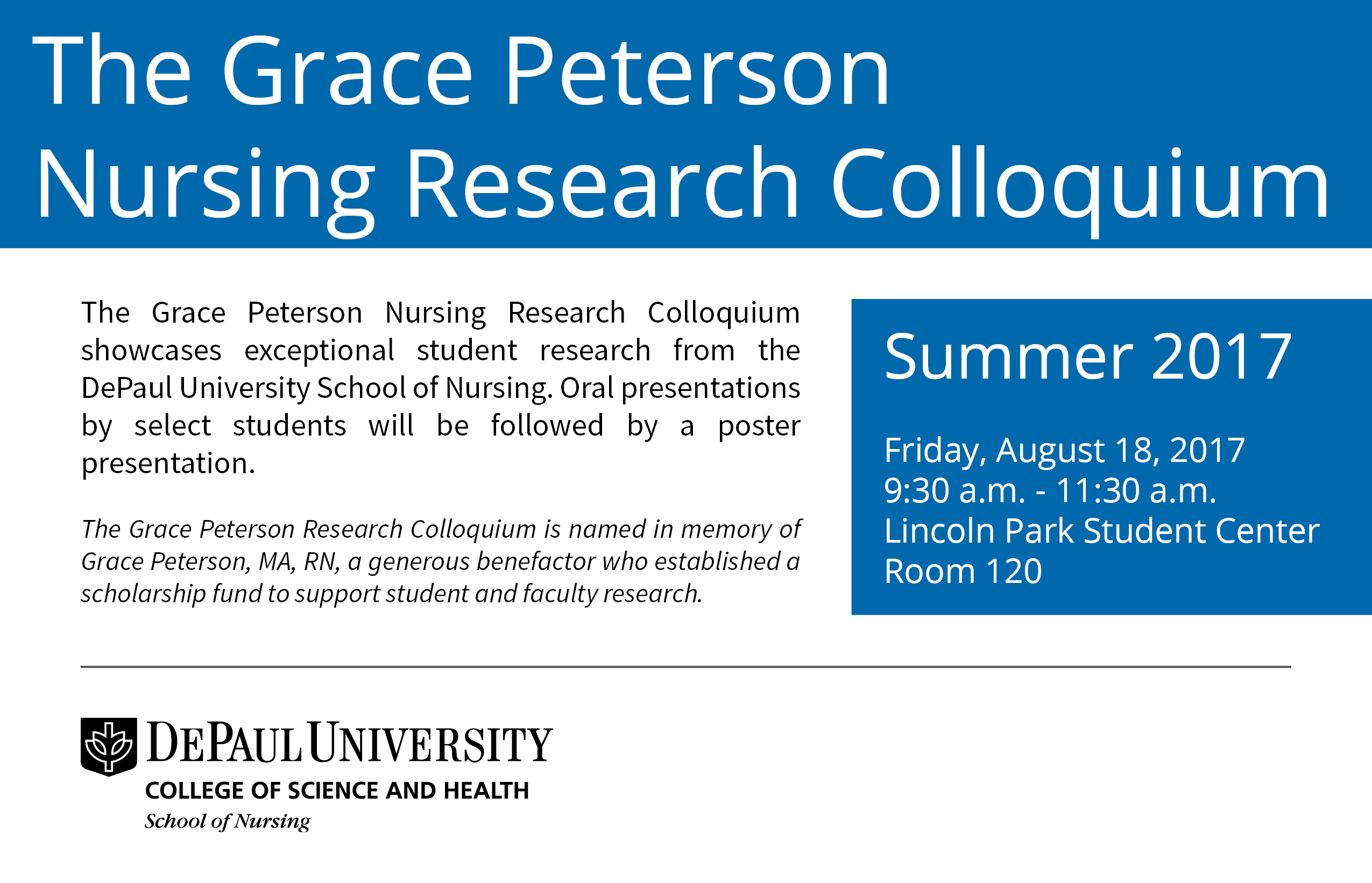Start Date
18-8-2017 10:00 AM
End Date
18-8-2017 11:30 AM
Abstract
Pediatric Emergence Delirium Assessment and Documentation: Current Practice and Perceived Barriers
Alyse Voronov & Nicole Zeppo
Faculty Sponsor: Susan Krawczyk DNP, CRNA
Background: Current literature addresses the complexity of identifying pediatric emergence delirium (PED), but does not address barriers to PED assessment and documentation. By identifying these barriers, further research can be conducted regarding prevention and treatment of PED.
Objectives: This study aimed to: 1) describe the current PED assessment and documentation practices among post anesthesia care unit (PACU) registered nurses and anesthesia providers at UIHHSS; 2) describe the perceived barriers to PED assessment and documentation; and 3) develop an evidence based educational program to aid in the implementation of a validated PED assessment tool.
Method: A descriptive, cross-sectional online survey design was used to survey a convenience sample of 133 perioperative care providers consisting of anesthesia providers (anesthesiology attendings, anesthesiology residents, and certified registered nurse anesthetists) and PACU registered nurses at UIHHSS. Questions associated with perceived barriers to PED assessment and documentation practice were answered using a 5-point Likert-type response scale, with 1= strongly disagree; 2=disagree; 3=neutral; 4= agree; 5=strongly agree.
Results: The study received 40 responses during the data collection period for a response rate of 30.0%. Study results revealed current PED assessment and documentation practices at UIHHSS to be inconsistent and varied. Of statistical significance (p= 0.036), was the perceived barrier of “limited time” in the distribution of mean scores based on “how often do you care for pediatric patients.” Preferred learning methods varied, however a majority of participants (n=10) preferred a multimodal approach.
Conclusion: The results of this study revealed the barriers to PED assessment and documentation at UIHHSS, as well as the preferred learning methods of the participants. These results will help facilitate the creation of an evidence based, three-phase educational approach to change of practice at UIHHSS.
Included in
Pediatric Emergence Delirium Assessment: Current Practice and Perceived Barriers
Pediatric Emergence Delirium Assessment and Documentation: Current Practice and Perceived Barriers
Alyse Voronov & Nicole Zeppo
Faculty Sponsor: Susan Krawczyk DNP, CRNA
Background: Current literature addresses the complexity of identifying pediatric emergence delirium (PED), but does not address barriers to PED assessment and documentation. By identifying these barriers, further research can be conducted regarding prevention and treatment of PED.
Objectives: This study aimed to: 1) describe the current PED assessment and documentation practices among post anesthesia care unit (PACU) registered nurses and anesthesia providers at UIHHSS; 2) describe the perceived barriers to PED assessment and documentation; and 3) develop an evidence based educational program to aid in the implementation of a validated PED assessment tool.
Method: A descriptive, cross-sectional online survey design was used to survey a convenience sample of 133 perioperative care providers consisting of anesthesia providers (anesthesiology attendings, anesthesiology residents, and certified registered nurse anesthetists) and PACU registered nurses at UIHHSS. Questions associated with perceived barriers to PED assessment and documentation practice were answered using a 5-point Likert-type response scale, with 1= strongly disagree; 2=disagree; 3=neutral; 4= agree; 5=strongly agree.
Results: The study received 40 responses during the data collection period for a response rate of 30.0%. Study results revealed current PED assessment and documentation practices at UIHHSS to be inconsistent and varied. Of statistical significance (p= 0.036), was the perceived barrier of “limited time” in the distribution of mean scores based on “how often do you care for pediatric patients.” Preferred learning methods varied, however a majority of participants (n=10) preferred a multimodal approach.
Conclusion: The results of this study revealed the barriers to PED assessment and documentation at UIHHSS, as well as the preferred learning methods of the participants. These results will help facilitate the creation of an evidence based, three-phase educational approach to change of practice at UIHHSS.


